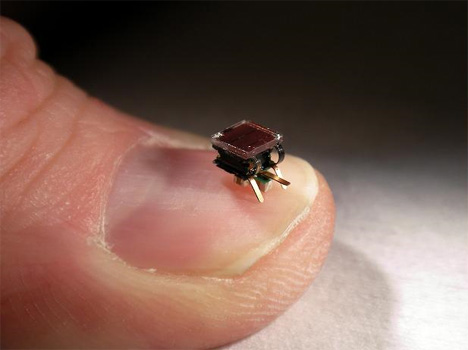Week 8: Nanotech and Art
Before this week, I knew some applications of
nanotechnology, especially for its use to visualize very small objects through
microscopy and its possible uses for medicine. However, I did not know that
nanotechnology already been incorporated into the products we use every day. Everyday
products like sunscreen and cosmetics rely on nanoparticles to work properly. (Gimzewski).
The future of this technology excites many scientists in the field. According
to Paul Alivisatos, associate
director of physical sciences at Lawrence Berkeley national Laboratory's nanofabrication
center, “Nano’s going to be like the invention of plastic, […] It’ll be
everywhere” (Kahn).
Through nanotechnology, scientists are trying to replicate
what nature has already engineered. Our cells work on the nanoscale to engineer
almost everything we use in our bodies. Some scientists are trying to engineer nanoscale
factories while other scientists are trying to engineer DNA to create organisms
that create certain products (Rothemund). I believe both methods will have an
important role in the future of nanotechnology as problems that can’t be solved
with other method will likely be solved through the other approach.
Artists have also done a lot of work with
nanotechnology. One such work of art is Nano-Scape by Christa Sommer and
Laurent Mignonneau. This work of art uses magnetic feedback to allow users to “feel”
invisible nanoparticles that work together to form a changing sculpture. This
dynamic sculpture changes as the user interacts with it (Curtin).
Artwork like
this that helps the public interact with and understand nanotechnology is
incredibly important. As of right now, much of the public is still scared of
nanotechnology and popular science articles often serves to increase this fear.
Science fiction has often depicted nanotechnology unfavorably and this has colored
the public’s perception of this emerging technology. However, artists can help
the public understand and appreciate nanotechnology and possibly turn this fear
into cautious optimism.
Works Cited
Curtin, John. "Art in the Age of
Nanotechnology." Art.base. N.p., 30 Apr. 2015. Web. 24 May 2015.
<https://art.base.co/event/2104-art-in-the-age-of-nanotechnology>.
Gimzewski, James K. "Nanotech." University
of California. Web. 24 May 2015.
<https://www.youtube.com/watch?v=oKlViSKkPd0>.
Kahn, Jennifer. "Nanotechnology's Big Future."
Nanotechnology Article. National Geographic, June 2006. Web. 24 May 2015.
<http://science.nationalgeographic.com/science/space/universe/nanotechnology.html>.
Rothemund, Paul. "Paul Rothemund: DNA Folding, in
Detail." 24 May 2015. TED Talk. Web. 24 May 2015.
<http://www.ted.com/talks/paul_rothemund_details_dna_folding/transcript?language=en>.
Smith, Jessica. "Nanotechnology with Caution, Not
Fear." The Berkeley Science Review. N.p., 18 May 2012. Web. 24 May 2015.
<http://berkeleysciencereview.com/nanotechnology-with-caution-not-fear/>.



No comments:
Post a Comment